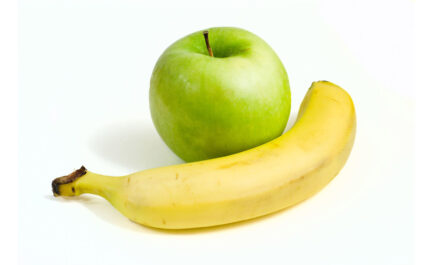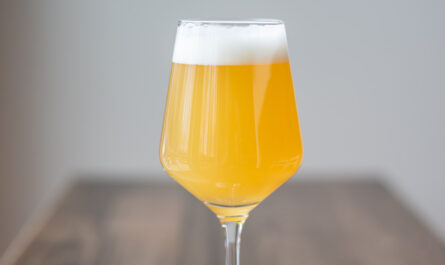This recipe pushes the boundaries of my typical NEIPAs. My goal was to create a big IPA with big mouthfeel, lots of tropical fruit, and a massive dry-hop charge. The result was exactly what I was looking for. Beautifully golden hazy with layers of deep fruity hop flavor. This is one of the first recipes where I re-employed an actual double dry hop (split into two separate charges).
The initial recipe did not account for such a massive charge, but after being underwhelmed with early samples, I decided to take a risk and throw an additional DH charge 48 hours before kegging. This final DH added a lot of unique character and true layers of flavor. I could taste the original beer, but could also detect the late LUPOMAX® charges. It added complexity I haven’t been able to achieve in my homebrew in a long time. Consider me a DDH convert.
This recipe utilizes Nelson Sauvin and the lesser-known HBC 586 variety. Both hops offer some spiciness that plays nicely with the fruitier hops. This really helps add some kick behind the softer citrusy notes.
Note: I intentionally omitted whirlfloc from this recipe.
Ingredients
Fermentables
12 lb (56.5%) — Briess Pale Ale Malt 2-Row — 3.5 °L
4 lb (18.8%) — Briess Oats, Flaked — 1.6 °L
4 lb (18.8%) — Briess Wheat White Malt — 2.3 °L
1 lb (4.7%) — BestMalz Acidulated — 2.8 °L
4 oz (1.2%) — Proximity Malt Crystal 15L — 11.6 °L
Whirlpool
3 oz (10 IBU) Motueka 7% — 30 min @ 185 °F
Dry Hops
5 oz — Motueka 7% — day 5
3 oz — Nelson Sauvin 13% — day 5
4.5 oz — Citra LUPOMAX 18% — day 8
0.5 oz — HBC 586 LUPOMAX 13% — day 8
Yeast
2 packs SafAle™ S-04
Other
Whirlfloc – 15 minutes
Water Profile
Cl– 175
SO42- 75
Specifications
Method: All-grain
Batch size: 6 gallons
Efficiency: 60%
OG: 1.080
FG: 1.017
ABV: 8.3%
SRM: 7
Target Mash pH: 5.2 (adjust with acid malt/lactic acid as needed)
Post Boil pH: 4.9 (adjust with lactic acid with 15 min remaining)
Mash Temp: 150°F – 60 minutes
Boil: 60 minutes
Fermentation Temp: 68-72°F
Notes
Day 1: Pitch yeast at 68°F and let free rise to 72°F on days 2-3 for the remainder of fermentation. Beer should finish in 4-5 days.
Day 4-5: Add dry hop charge #1, hold at 70-72°F at 10 PSI. Drop the hops out after 72 hours if you have a conical. The head pressure will help push the hops to the bottom of the cone. If you’re struggling to remove hops, you can crash down to 60°F before adding the final charge.
Day 8-9 Add dry hop charge #2. Be sure to place the conical under pressure once again if you don’t have the ability to add hops under existing pressure.
Day 10-11: Crash to 33°F for 48 hours. Proceed with packaging/cold conditioning for another week in the keg at serving temps. Should be prime drinking by days 18-21.
Read this article here first for an in-depth overview of brewing NEIPAs. Use code HAZY20 to get 20% off your purchase of $100 or more at YVH!





Thanks for sharing the recipe and your tips!
I’ve been omitting whirlfloc recently as well, haven’t noticed too much of a difference with/without, but I think it’s the move for this style of beer.
I see you are dry hopping under pressure at 70⁰F, without dropping the temp to 60⁰F for 24 hours to drop out the yeast.
Was that intentional and did you notice any differences?
Cheers!
This was intentional. I’ve been changing up my process a bit based on constant feedback and advice from professionals. At this point, my best beers came from warmer DH temps. This is an unfair conclusion of course because my process all around has greatly improved since I first sought out to perfect the style. You can make a great beer either temp, it’s just a matter of personal taste.
Look at that perfect color and foam, such a beautiful glass of cold beer! Just looking at it makes me want to grab a drink or two.
Hi, looks like a great recipe. Struggling to get HBC 586 at homebrew level here in the UK, which is a shame as the beers I’ve tried with it have been great.
Any recommendations for a substitute hop?